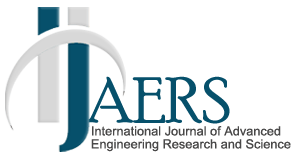The Effect of Ketapang Leaf Extracts (Terminalia catappa L.) on the Cholesterol Levels of Male Mice (Mus musculus L.) Hypercholesterolmia |
| ( Vol-4,Issue-7,July 2017 ) OPEN ACCESS |
| Author(s): |
Joko Waluyo, Dwi Wahyuni |
| Keywords: |
|
Cholesterol, Hypercholesterolemia, Ketapang Leaf Extracts, Male Mice. |
| Abstract: |
|
Cholesterol is a useful substance for the body to regulate chemical processes such as building cell membranes, producing vitamin D, and forming steroid hormones. Hyper-cholesterol is a condition where cholesterol levels increase over the normal range (>200 mg/dL). One of the herbs which can be used as a cholesterol-lowering substance is Ketapang leaf. The leaf has several compounds which function as antioxidants. Based on Phytochemical test, this leaf contains flavonoid, saponin, tritepen, diterpen, phenolic, and tannin. Those compounds function to inhibit cell damage. This study was aimed to determine the effect of Ketapang leaf extracts (Terminalia catapa L.) to decrease cholesterol levels of hypercholesterolemia of male mice (Mus musculus) which are induced with lard. The study employed experimental design involving 25 male mice, aged at 2 monthsold and weighing 20-30 grams. These mice were divided into 5 groups, comprising of treatment 1 (2 mg/ 20 grams of weight), treatment 2 (4 mg/ 20 grams of weight), treatment 3 (8mg/ 20 grams of weight), positive control (simvastatin 0,26 mg/kg of weight), and negative control (CMC Na 1%). The extract was given for 14 days with 1% volume of weight. The measurement of blood cholesterol levels was done on day 8 as the preliminary data, day 14 after hypercholesterolemia of male mice, day 21 and day 28 after giving Ketapang leaf extracts. The dosage of Ketapang leaves extracts which was given during the treatments significantly affected (p=0,0043) the average of blood cholesterol levels of male mice. Giving the leaf extracts for two months of treatments was found successful in decreasing blood cholesterol 157,62 ± 17,54; 341,55 ± 12,73; 196 ± 16,32; 196,17 ± 16,93 mg/dL. |
|
|
| Paper Statistics: |
| Cite this Article: |
| Click here to get all Styles of Citation using DOI of the article. |
- Track Your Paper
- editor.ijaers@gmail.com
- ISSN : 2349-6495(P) | 2456-1908(O)



Advanced Engineering Research and Science